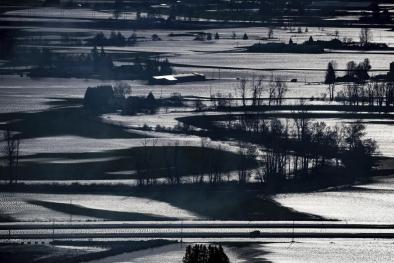Climate change is increasing the risk of a California megaflood
Study key findings & significance
- Climate change has already made extreme precipitation in California twice as likely, part of a trend projected to continue through 2100.
- Extreme storm sequences are projected to generate 200% to 400% more runoff by the end of the century.
Author quotes
“In the future scenario, the storm sequence is bigger in almost every respect. There’s more rain overall, more intense rainfall on an hourly basis and stronger wind.”
- Daniel Swain, UCLA climate scientist and co-author
Abstract
Despite the recent prevalence of severe drought, California faces a broadly underappreciated risk of severe floods. Here, we investigate the physical characteristics of “plausible worst case scenario” extreme storm sequences capable of giving rise to “megaflood” conditions using a combination of climate model data and high-resolution weather modeling. Using the data from the Community Earth System Model Large Ensemble, we find that climate change has already doubled the likelihood of an event capable of producing catastrophic flooding, but larger future increases are likely due to continued warming. We further find that runoff in the future extreme storm scenario is 200 to 400% greater than historical values in the Sierra Nevada because of increased precipitation rates and decreased snow fraction. These findings have direct implications for flood and emergency management, as well as broader implications for hazard mitigation and climate adaptation activities.
Related Content





